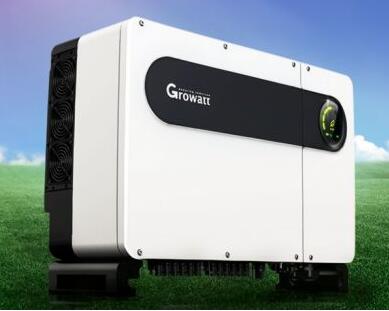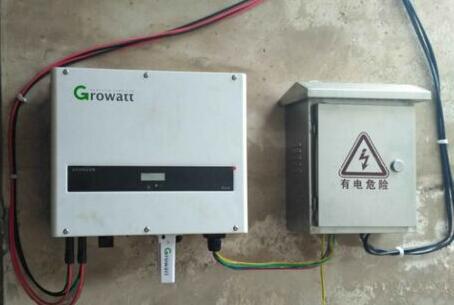Photovoltaic inverters are the core equipment for energy conversion in photovoltaic power plants and are responsible for converting the DC power of photovoltaic modules into AC power and into the public network. At the same time, it also serves as the information collection center for the entire power station, and functions as the "ear", "eye", and "nose" of the power station. With such an important equipment, the owner certainly hopes that the fewer problems, the better. It is better to never use maintenance and maintenance after installation. To achieve this goal, we need to have a more in-depth understanding of the inverter, to understand what features of the inverter can cause failure, resulting in operation and maintenance. The merchants of Guruwatt inverters summarized how to make the inverter less (free) operation and maintenance, and considered that it should be considered from the three aspects of inverter selection, system design and field application environment. The standard warranty period for string inverters is 5 years. To ensure that the inverter does not fail due to its own cause within 5 years, the following aspects should be emphasized: (a) outdoor application considerations ï¬ The protection level must be IP65 or higher. The larger the number, the better. The larger the number, the better the protection performance. ï¬ Shell processing technology is divided into traditional sheet metal technology and die-casting technology. Die-casting technology is superior to sheet metal technology. ï¬ In terms of shell material, the aluminum shell is superior to the iron shell. (B) maintenance-free design considerations The inverter should avoid the use of fragile and consumable parts as much as possible. The common wearing parts are: ï¬ Fans: Their own faults, noise, derating, and regular maintenance. ï¬ DC fuses: Self-failure, increased loss, and fire. ï¬ LCD screen: It is faulty. ï¬ Key: Self fault. Based on this, a more reliable inverter should adopt natural cooling and no DC fuses. At the same time, Bluetooth, RF, etc. are used instead of LCD screens and buttons. There are only a few manufacturers of inverters in the market that comply with the above design considerations. At present, there are only a few manufacturers such as Huawei, Sunny, and Shengnengjie. (C) Component Selection Considerations ï¬ As a power electronic product, an inverter is composed of numerous electronic components. The reliability of the components directly determines the reliability of the inverter. It is the cornerstone of inverter reliability and must be selected from well-known brands in the industry. ï¬ The components that affect the service life of the product should be carefully examined, such as electrolytic capacitors, film capacitors, IGBTs, relays, connectors, spoiler fans, etc. ï¬ Use of fragile and consumable parts should be avoided as much as possible. (4) Adaptability of AC and DC voltage In the middle of the string inverter between the PV module and the public power grid, it plays the role of power conversion. The front end needs to adapt to the DC input voltage of the module, and the back end must adapt to the AC reference voltage of the power grid. Only the two sides are adapted, and the machine can work normally. At work, either side of the machine will not report the fault and will not be able to work. DC voltage adaptability considerations 1, the lower the DC start voltage, the stronger the adaptability 2, the wider the DC voltage range, the stronger the adaptability ï¬ AC voltage adaptability considerations 1, the wider the AC voltage range, the stronger the adaptability 2, current harmonic THDI: "3%, the smaller the better 3, the output current DC component value: "0.5% ln, the smaller the better 4, power factor: normal PF = 1, the wider the adjustable range, the better Concerned about the above matters concerning the selection of inverters, can only ensure that the reliability and adaptability of the inverter itself is OK, but to solve the "self" problem. As an electrical equipment of a photovoltaic system, an inverter must be designed and applied in conjunction with the entire system. Whether or not the inverter can work normally is related to the system design and application environment in addition to its own causes. If the system design and site construction are not standardized, the “external†factors that exceed the normal working conditions of the inverter will be introduced, causing the inverter to not operate normally, resulting in operation and maintenance. With regard to the considerations of photovoltaic system optimization design, the author's previous articles have special discussions, and here is no longer proud. Friends who are interested can look up the previous article "Precautions for Optimum Design of Photovoltaic Systems." (a) natural environment considerations String inverter installation location recommendations: 1. Install as close to the inverter as possible to avoid long-distance wiring of DC cables. 2, as far as possible installed on the bracket below the components, under the eaves, the outer wall (recommended to install the sun cover), to avoid the outer ring temperature is too high to cause the machine derating or even stop. (b) Electrical environment considerations 1. The grid voltage should be stable. For areas with weak rural power grids or power consumption areas with strong inductive loads in the factory, the manufacturer can be allowed to relax the output voltage range of the inverter appropriately to avoid machine shutdowns and undervoltage faults. 2. The distance from the inverter to the grid connection point should be as short as possible. If there are objective reasons for long-distance wiring, it is necessary to pay attention to the inverter output voltage being caused by the voltage increase of the cable to cause over-voltage disconnection from the network, and the manufacturer can also be appropriately relaxed in connection with the inverter. The output voltage range. 3, the number of parallel inverters should not be too much, there is a certain amount of load in the same connection point within the same point, too many inverters connected in parallel at a point, it is easy to cause harmonic interference led to system instability, Affects the normal operation of the machine. There are many factors that affect the normal operation of string inverters. The above are some of the factors that need to be considered when the author analyzes the inverter's normal operation from the three sides of the inverter itself, system design, and application environment. Only when these factors are taken into consideration, can we ensure The inverter runs normally for a long time to avoid unnecessary operation and maintenance investment.
A separate slip ring is a device that allows two or more rotating electrical shafts to be connected without having to pass the electricity through the shafts' bearings. This is often used in situations where there is a need to power something externally while the shaft is still turning. For example, a machine might have a drive shaft that powers it while also having a separate output shaft that needs to turn at a different speed. By using a separate slip ring, these two shafts can be powered without any interference.
Slip Ring Shaf is a key component of a slip ring. It is the shaft on which the rotary electrical contacts are mounted. The shafts must be strong enough to support the weight of the contacts and must be able to turn freely. There are many factors to consider when selecting a shaft material, including strength, corrosion resistance, and operating temperature.
Oubaibo is a professional separate slip ring manufacturer located in China. They offer a wide range of slip ring shaft made from different materials, including carbon steel, stainless steel, and brass. Their products are made to meet the highest quality standards and are backed by a 100% satisfaction guarantee.
Separate Slip Ring,Slip Ring Shaft,Slip Ring 4 Wire,Slip Ring For Motor Dongguan Oubaibo Technology Co., Ltd. , https://www.sliprobs.com

